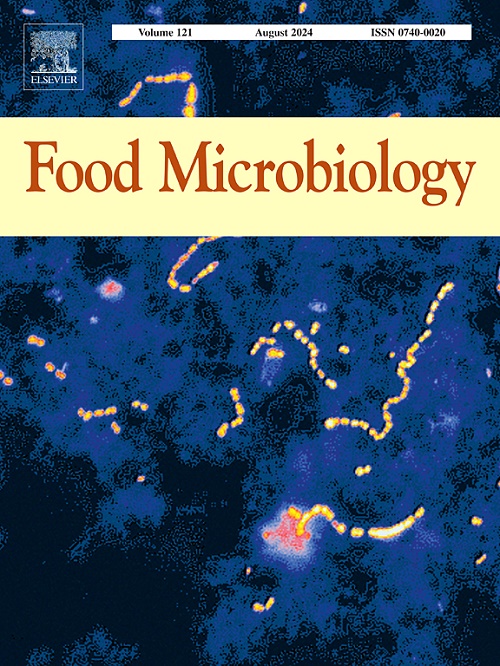Deciphering the acidophilia and acid resistance in Acetilactobacillus jinshanensis dominating baijiu fermentation through multi-omics analysis
IF 4.5
1区 农林科学
Q1 BIOTECHNOLOGY & APPLIED MICROBIOLOGY
引用次数: 0
Abstract
Lactic acid bacteria (LAB) are pivotal in constructing the intricate bio-catalytic networks underlying traditional fermented foods such as Baijiu. However, LAB and their metabolic mechanisms are partially understood in Moutai flavor Baijiu fermentation. Here, we found that Acetilactobacillus jinshanensis became the· dominant species with relative abundance reaching 92%, where the acid accumulated rapidly and peaked at almost 30 g/kg in Moutai flavor Baijiu. After separation, purification, and cultivation, A. jinshanensis exhibited pronounced acidophilia and higher acid resistance compared to other LAB. Further integrated multi-omics analysis revealed that fatty acid synthesis, cell membrane integrity, pHi and redox homeostasis maintenance, protein and amide syntheses were possibly crucial acid-resistant mechanisms in A. jinshanensis. Structural proteomics indicated that the surfaces of A. jinshanensis proteases contained more positively charged amino acid residues to maintain protein stability in acidic environments. The genes HSP20 and acpP were identified as acid-resistant genes for A. jinshanensis by heterologous expression analysis. These findings not only enhance our understanding of LAB in Baijiu, providing a scientific basis for acid regulation for production process, but also offer valuable insights for studying core species in other fermentation systems.
通过多组学分析解密白酒发酵中占主导地位的金山乙酰乳杆菌的嗜酸性和耐酸性
乳酸菌(LAB)在构建白酒等传统发酵食品的复杂生物催化网络中起着关键作用。然而,人们对茅台风味白酒发酵过程中的乳酸菌及其新陈代谢机理还不甚了解。在这里,我们发现金山乙酰乳酸杆菌成为优势菌种,相对丰度达到 92%,在茅台风味白酒中酸度迅速积累并达到近 30 克/千克的峰值。经过分离、纯化和培养,金山杆菌表现出明显的嗜酸性,与其他 LAB 相比具有更高的耐酸性。进一步的多组学综合分析表明,脂肪酸合成、细胞膜完整性、pHi和氧化还原平衡维持、蛋白质和酰胺合成可能是金山菌关键的耐酸机制。结构蛋白质组学表明,金山蛙蛋白酶表面含有更多带正电荷的氨基酸残基,以维持蛋白质在酸性环境中的稳定性。通过异源表达分析,HSP20 和 acpP 基因被确定为金山杆菌的抗酸基因。这些发现不仅加深了我们对白酒中 LAB 的了解,为生产过程中的酸调节提供了科学依据,而且为研究其他发酵系统中的核心物种提供了宝贵的见解。
本文章由计算机程序翻译,如有差异,请以英文原文为准。
求助全文
约1分钟内获得全文
求助全文
来源期刊

Food microbiology
工程技术-生物工程与应用微生物
CiteScore
11.30
自引率
3.80%
发文量
179
审稿时长
44 days
期刊介绍:
Food Microbiology publishes original research articles, short communications, review papers, letters, news items and book reviews dealing with all aspects of the microbiology of foods. The editors aim to publish manuscripts of the highest quality which are both relevant and applicable to the broad field covered by the journal. Studies must be novel, have a clear connection to food microbiology, and be of general interest to the international community of food microbiologists. The editors make every effort to ensure rapid and fair reviews, resulting in timely publication of accepted manuscripts.
 求助内容:
求助内容: 应助结果提醒方式:
应助结果提醒方式:


